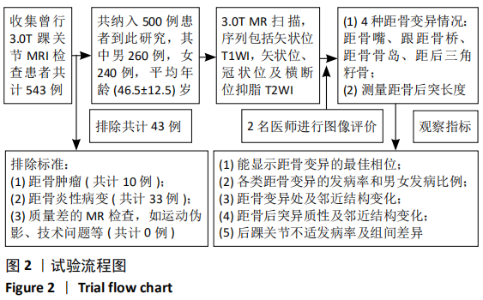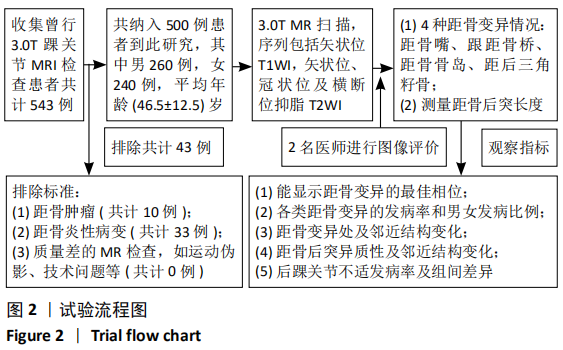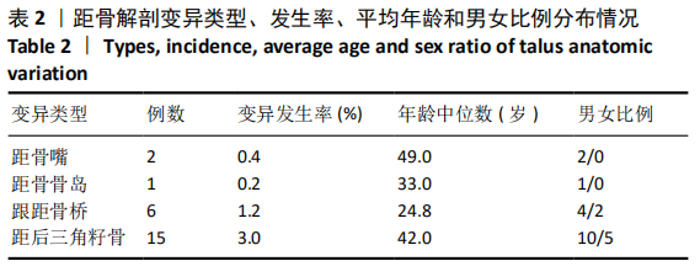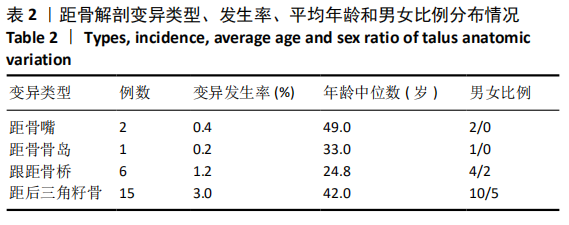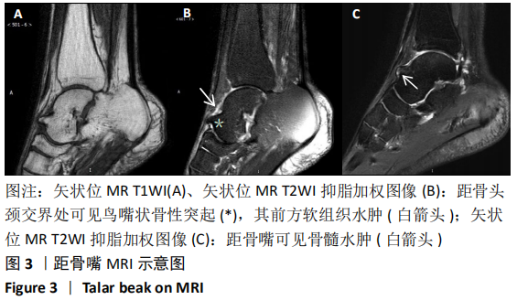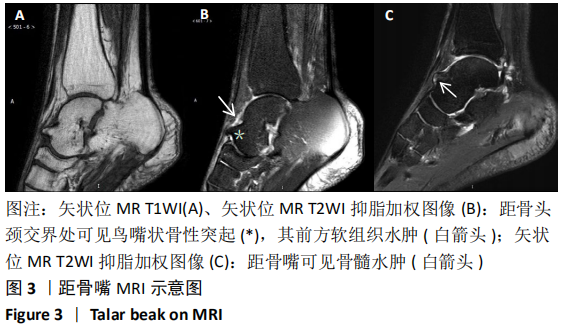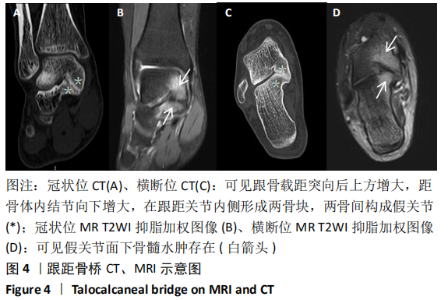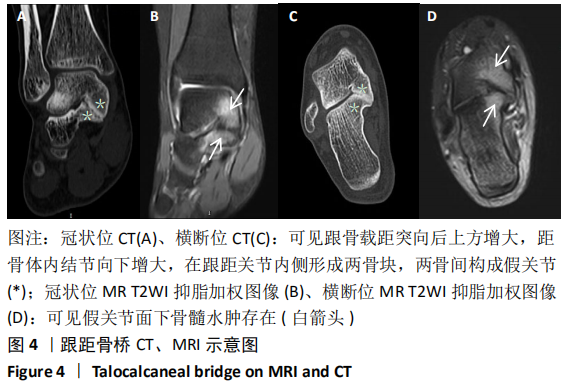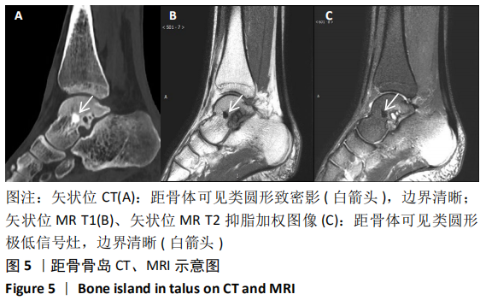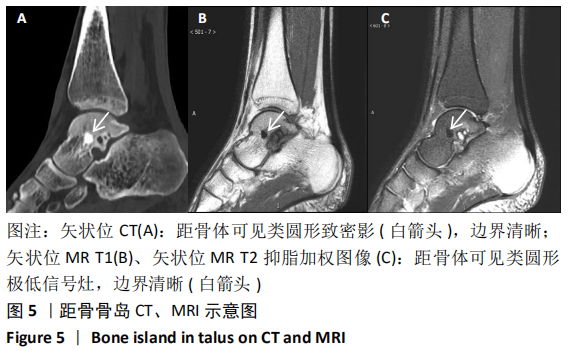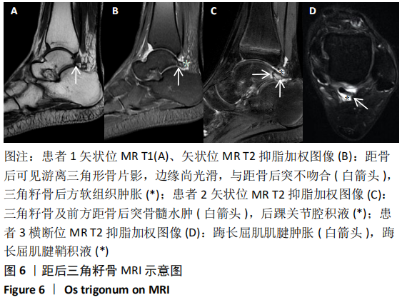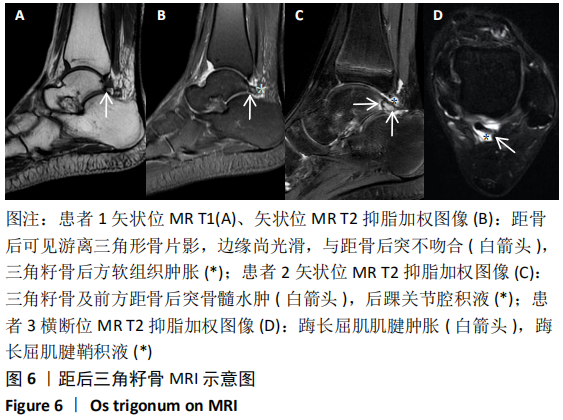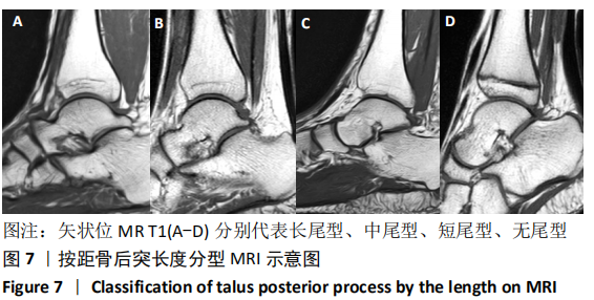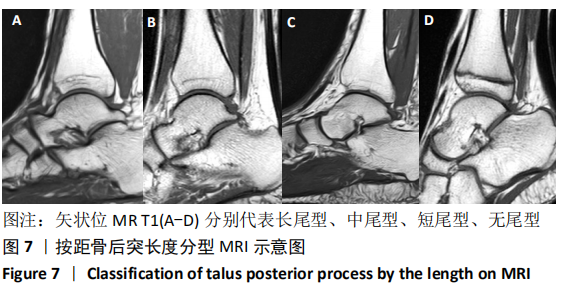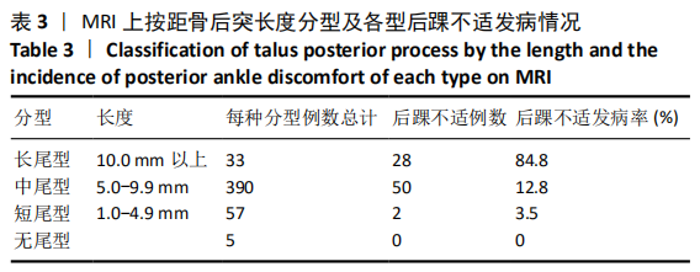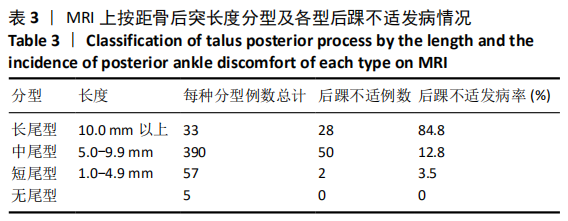[1] 河北新医大学《人体解剖学》编写组.人体解剖学(上册)[M].北京:人民卫生出版社,1977:336-337.
[2] 解剖学名词审定委员会.人体解剖学名词[M].北京:科学出版社, 1991:42-43.
[3] 王培信,谢逸波,李培浩,等.双侧罕见距骨嘴舟骨唇1例[J].中国临床解剖学杂志,2008,26(5):512.
[4] 吴国忠,王文怀,陈守勃,等.关节镜下改良后踝入路切除治疗成人疼痛性跟距骨桥[J].骨与关节修复重建,2020,34(1):46-52.
[5] 王洪军,宋兵,张晓红,等.跟距骨桥的高频超声诊断价值[J].中国超声医学杂志,2018,34(10):935-938.
[6] 李冰.距后三角籽骨撞击综合征影像表现分析[J].实用医院临床杂志,2017,14(4):162-163.
[7] 庞施义,李忠华,王庆荣,等.距骨尾的命名及距骨尾骨折[J].中华骨科杂志,1999,19(10):600-603.
[8] 李忠华,石瑾,王庆荣,等.距骨尾的形态特点及临床意义[J].中国临床解剖学杂志,1998,16(4):328-329.
[9] 王庆荣,庞施义,王琨,等.距骨尾部骨折16 例报告[J].骨与关节损伤杂志,1996,11(5):288-289.
[10] 刘布克,孙谦,张犁.罕见距骨发育变异-家族性距骨嘴[J].放射学实践,2002,17(3):230.
[11] 马钦华,陈琦,王建国,等.足跗骨发育变异X线研究[J].实用放射学杂志,2003,19(9):814-816.
[12] 解冰,闫硕,张浩,等.骨桥切除治疗成人非关节炎性跟距骨桥的疗效观察[J].中国骨伤,2017,30(11):1048-1051.
[13] 王伟,范时雨,高成杰,等.跟距骨桥症发病原因分析与手术方法探讨[J].中国矫形外科杂,1998,5(3):212-213.
[14] 王志斌,马春忠.MRI诊断后踝关节疼痛的病因[J].中国医学影像技术,2017,33(10):1587-1590.
[15] NGUYEN M, BEAULIEU C, WEINSTEIN S, et al. The incidental bone lesion on computed tomography: management tips for abdominal radiologists. Abdom Radiol (NY). 2017;42(5):1586-1605.
[16] SYED AZ, YANNAM SD, PAVANI G. Research: Prevalence of Dense Bone Island. Compend Contin Educ Dent. 2017;38(9):e13-e16.
[17] YONETSU K, YUASA K, KANDA S. Idiopathic osteosclerosis of the jaws: panoramic radiographic and computed tomographic findings. Oral Surg Oral Med Oral Pathol Oral Radiol Endod. 1997;83(4):517-521.
[18] KAWAI T, HIRAKUMA H, MURAKAMI S, et al. Radiographic investigation of idiopathic osteosclerosis of the jaws in Japanese dental outpatients. Oral Surg Oral Med Oral Pathol. 1992;74(2):237-242.
[19] FUENTES R, ARIAS A, ASTETE N, et al. Prevalence and morphometric analysis of idiopathic osteosclerosis in a Chilean population. Folia Morphol (Warsz). 2018;77(2):272-278.
[20] WYBENGA JM, BIEMANS JM, POLLET V. Os trigonum syndrome. JBR-BTR. 2008;91(3):128-129.
[21] RIETVELD ABMB, HAGEMANS FMT, HAITJEMA S, et al. Results of Treatment of Posterior Ankle Impingement Syndrome and Flexor Hallucis Longus Tendinopathy in Dancers: A Systematic Review. J Dance Med Sci. 2018;22(1):19-32.
[22] MIYAMOTO W, MIKI S, KAWANO H, et al. Surgical outcome of posterior ankle impingement syndrome with concomitant ankle disorders treated simultaneously in patient engaged in athletic activity. J Orthop Sci. 2017;22(3):463-467.
[23] IOVANE A, MIDIRI M, FINAZZO M, et al. Os trigonum tarsi syndrome. Role of magnetic resonance. Radiol Med. 2000;99(1-2):36-40.
[24] 王浩,张伟,李凤陈,等.后踝撞击综合征MRI影像特征的多因素分析[J].国际医学放射学杂志,2019,42(1):49-53.
[25] MARTINS N, SEIXAS MI, COUTO M, et al. Posterior Ankle Impingement Syndrome. Reumatol Clin. 2018;14(4):244-245.
[26] 江东,胡跃,林焦晨,等.慢性踝关节不稳合并后踝撞击同期手术中长期疗效及影响因素分析[J].北京大学学报(医学版),2019, 51(3):505-509.
[27] 黄勃,王志.后踝撞击综合征MRI和CT诊断价值分析[J].中国医学物理学杂志,2020,37(6):730-733.
[28] 石祥龙,权琳,吕恩民,等.踝关节撞击综合征的影像学表现分析[J].医学影像学杂志,2019,29(4):653-656.
[29] 潘卫星,杨性安,李欠云,等.三角籽骨综合征的MRI征象分析[J].浙江实用医学,2017,22(3):193-194.
[30] 黎加识,洪春鹏,孙赞,等. 踝关节后方撞击综合征的MRI诊断价值探讨[J].中国临床医学影像杂志,2018,29(7):510-513.
[31] PEACE KA, HILLIER JC, HULME A, et al. MRI features of posterior ankle impingement syndrome in ballet dancers: a review of 25 cases. Clin Radiol. 2004;59(11):1025-1033.
[32] BERMAN Z, TAFUR M, AHMED SS, et al. Ankle impingement syndromes: an imaging review. Br J Radiol. 2017;90(1070):20160735.
|
